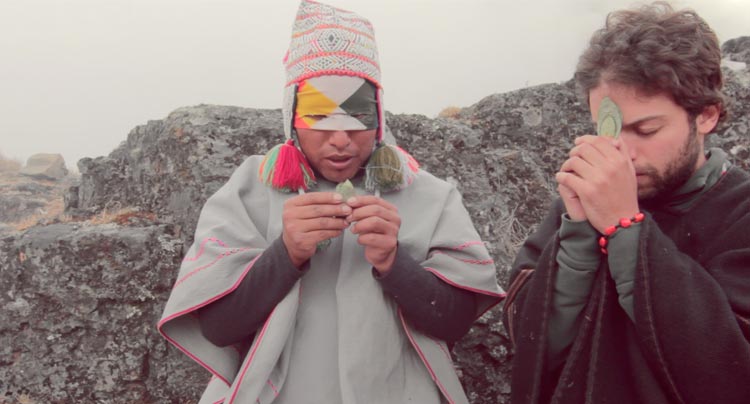
Watching someone achieve their epiphany here is much less interesting than it sounds.

Watching someone achieve their epiphany here is much less interesting than it sounds.
With such a philosophical subject as trying to discover the reason for our existence, Humano is indeed as heady of an experimental study as it sounds. At one point the filmmaker, Alan Stivelman, takes hallucinogens while pondering if the things we imagine really exist and are just simply invisible—which subsequently makes you wonder if the film would make more sense if under the influence of the same drugs. At the beginning the film displays a warning in large white type begging you not to proceed in watching unless you have faced life’s conflicts as otherwise you are probably not aware of your own existence—a warning that should not be taken lightly.
A 25-year-old man named Alan ventures on an ambitious journey around the Andes mountains where his ancestors are from in order to discover the meaning of life. At his side is an Andean priest who attempts to answer as many of the questions that fill the pages of Alan’s notebook as he can. Attempts to define nature, explain why the snowy mountains are so sacred, and the very reason of our existence are not always answered in a complete way. Ultimately, the documentary (and Alan) recognizes that it is impossible to understand the things around us without first understanding ourselves.
Aside from the deep-thinking narrative, one thing that you will notice from the beginning is how visually striking the cinematography is in Humano. The beautiful landscapes that surround the Andes mountains are perfectly framed. Some of the more memorable shots include, snowcapped mountains, herd of llamas on the countryside, and scenic waterfalls that flow from the mountains. Extremely colorful headpieces worn by the locals provide a nice sharp contrast to the under-saturated color tint that the picture.

With varying degrees of success Alan turns the camera back on himself from time to time, reciting his thoughts on these experiences directly into the camera. However, the majority of the film he stays behind the camera to focus on the priest and locals who share their viewpoints on life. Even though putting himself as the subject adds a more personal touch to his journey, the switching back and forth between filming and being filmed feels a bit disjointed.
While the animated graphics found throughout a couple parts of the documentary serve as a welcoming way to visually showcase the ancient folktales and rituals, they feel out of place with the rest of the film. The reason for using animations are obvious, after all showing a person being lifted off into an alternate dimension is just a little tricky. Taking a simpler approach of utilizing its amazing cinematography during the voiceovers stories would have worked better in the end.
At times Humano places the focus on the personal life-changing experience Alan endures. Other times the focus is on providing background on the ancient rituals that make the documentary feel more educational. Flirting between a character study of one’s self and the history of the Andean culture proves to be a bewildering balancing act. It takes a lot of ambition to explore such thought-provoking topics such as the reason for our own existence. And while it was outstanding that the filmmaker was able to document his a life-changing epiphany, watching someone achieve it is much less interesting than it sounds.